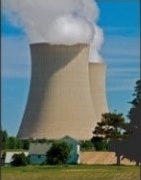飯舘村の伊藤延由さん(75)=新潟県出身=が起こした訴訟の第11回口頭弁論が5月29日午後、東京地裁610号法廷(東亜由美裁判長)で開かれた。原告本人尋問が行われ、伊藤さんは原発事故で奪われた「いいたてふぁーむ」の管理人業務や有機農業への想いなどを語った。「事故が無ければ今も管理人を続けていた」と主張する原告に対し、被告東電は全面的に争う姿勢を崩していない。次回期日は8月7日10時。年内にも判決が言い渡される見通しだ。
【有機農業の好条件揃っていた村】
飯舘村が「安住の地」になるはずだった。若者たちの研修の面倒を見ながら、夢の有機農業。2010年3月31日に行われた「いいたてふぁーむ」のオープニングセレモニーには菅野典雄村長も駆け付けた。新聞記者も取材に来た。まさか1年後、原発事故による放射性物質拡散の被害に遭う事になろうとはだれも考えるはずも無く、伊藤さんも盛大な祝賀パーティの輪に加わっていた。
親の介護がひと段落するのと入れ替わるように舞い込んできた管理人の仕事。介護を理由にいったんは会社を辞めていたが、20年を超える付き合いの中で、社長や専務の信頼は厚かった。伊藤さんは「ぜひやらせてください」と即答した。「以前からこの国の農業には危惧を抱いていたんです。私には孫が7人いますが、今のような栽培をした米は食べさせたくない、有機栽培をしたいと考えていました」。
農薬を使わない、もしくは大幅に減らすという事は、周囲にも病虫害を発生させかねない。その点、飯舘村には好条件が揃っていた。「ふぁーむを開設した集落の農家は1軒しかありませんでした。農業用水も上流にも下流にも利用する農家が全くいなかった」。2・2ヘクタールの水田を活用し、まずは減農薬での稲作や野菜作りに取り組んだ。東京から研修に来た若者たちに飯舘村の自然環境を楽しんでもらいながら少しでも農業に勤しんでもらう。その内容を考えるのも楽しかった。村民の助けも得ながら収穫した米は評判が評判を呼び、年末には売り切れた。「追加注文を断ったほどでした。夢が叶って幸せを実感していました」。
[…]
【長年の人間関係で得た管理人業務】
法廷で伊藤さんが強調したのは「あの職を得られた環境」だった。「20数年間、会社の人たちと一生懸命に仕事をして信頼を得た結果、あの仕事(農業研修所の管理人業務)が私のところに来たと思っています」。新たな職場環境で同じような人間関係を構築しようと思ったら、伊藤さんは100歳になってしまう。
そして何より、飯舘村の大自然と有機農業に適した環境。東電の代理人弁護士は「そんなに有機農業をしたいのなら、場所はいくらでもあるだろう」と言わんばかりの質問を繰り返したが、伊藤さんは「有機農業ならどこでもいいと言われると心外です」と語気を強めた。証人の元専務も、「代替地探しをしながら飯舘村のあそこが最高だったねと話した」と証言した。それらを全て奪ったのが原発事故だった。
2017年3月31日に帰還困難区域を除く避難指示が解除され、伊藤さんも2018年11月から村内で生活をするようになった。「放射線の環境については非常に厳しいものがあると自分自身で測定して分かったが、この中で何か出来る事があるんじゃないか、何か工夫する事で米作りが出来るんじゃないかと考えるようになった」。若者を招いての農業研修は断念したが、「測定の鬼」と周囲から呼ばれるほどに汚染の状況を測りながら模索を続けている。
伊藤さんは2017年8月25日に提訴。①管理人業務に関する雇用契約に期限の定めがあるか否か②2017年以降の就労不能損害と原発事故との因果関係があるか否か─を主な争点に、これまで10回の口頭弁論が行われてきた。2017年12月には伊藤さん自身が意見陳述している。
提訴後の記者会見で「何か私に落ち度がありましたか?」と切り出した伊藤さん。一方的に補償を打ち切る〝加害者〟に「被災者が負うべき責任は一切無い」、「一方的に汚されたうえに一方的に賠償を打ち切られるのは納得出来ない」と提訴を決めた。東電側は「賠償は尽くした」などとして全面的に争う姿勢を崩していない。「安住の地」を奪った原発事故に司法はどう向き合うのか。年内にも判決が言い渡される見通しだ。






